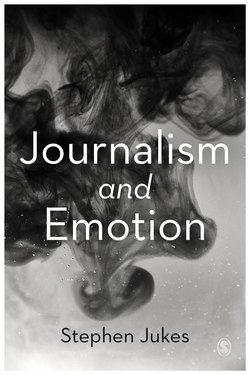Читать книгу Journalism and Emotion - Stephen Jukes - Страница 9
На сайте Литреса книга снята с продажи.
Introduction How Emotion Lies at the Heart of Today’s News and Journalism Practice
ОглавлениеWhen a 28-year-old Australian gunman went on the rampage in Christchurch, New Zealand, in 2019, killing 51 Muslims at Friday prayers, he streamed his cold-blooded attack live on Facebook using a helmet-mounted GoPro camera. It was not the first time this had been tried, but an earlier attempt, in the wake of the Charlie Hebdo shootings in France in 2015, had failed for want of an Internet connection. This time, however, the killer succeeded and the video footage, shot on a miniature camera normally used to capture extreme sports action, was immediately reposted, spreading rapidly across multiple social media platforms faster than it could be taken down. Crucially, in their rush to cover a major breaking news story, several news organisations incorporated edited versions into their online reporting before a public outcry forced them to remove the material and issue apologies.
Given the advances in digital technology and the torrent of dramatic footage of news events circulating online from members of the public and perpetrators of such acts, it is hardly surprising that today’s mainstream news agenda is likely to serve up a diet of atrocities, disaster and personal tragedy. Media organisations know full well the power of images to attract an audience, particularly at a time when their business models are under severe financial pressure. We live in a world of live-streamed terror, polarised political debates and fake news, a news landscape in which emotions and the appeal to emotions often dominate stories at the expense of fact-based journalism or rational debate. It seems as if the old cliché ‘if it bleeds, it leads’ has never been more true.
It is tempting to see this emotionalisation of the news as a new phenomenon that has swept aside normative concepts of objectivity and detachment that emerged in Anglo-American journalism in the late 19th century. Indeed, the sheer volume of emotive content that can be served up by the ubiquitous mobile phone and instant sharing technology has revolutionised journalism practice and opened up new ways of storytelling. Reality TV dominates tabloid headlines, social media has become an indispensable tool in the newsroom, and some journalists are happy to profess their emotions and opinions on screen. It has become second nature for a journalist to develop a ‘personal brand’. But on the other hand, notions of objectivity and detachment remain deeply embedded in many mainstream Western news organisations, and the fact of the matter is that journalism has always relied on emotion to attract attention and engage its readers and viewers.
The academic and BBC historian Jean Seaton captured this paradox and what is effectively a day-to-day juggling act for every journalist as follows (2005: 231):
The reporter’s first fear is of being boring. The best news is ‘hot’, which also means that it is commanding. It crashes through routine order and ‘demands’ attention. It is fashioned in the newsroom in order to be ‘sharp’ and ‘punchy’ – to create an impact: so far from being emotionally neutral, it is designed to stir, arouse and manipulate.
It is a tension that has rarely been voiced, indeed until recently it can be argued that objectivity enjoyed talismanic status (Richards & Rees, 2011) and any talk of emotion in the world of serious news journalism was taboo. In the past, I have referred to the use of emotion as ‘journalism’s dirty little secret’. But today that secret is out in the open for everyone to see.
